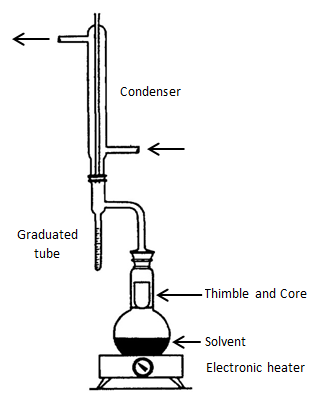Fundamentals of Fluid Flow in Porous Media
Chapter 2
Saturation:
Determination of Fluid Saturation from Rock Sample
The methods that are used to measure values of original rock saturation can be classified to two classes: Evaporation of the fluids in the rock and Leaching out the fluids in the rock by extraction with a solvent.
Retort method:
This method takes a sample and heats as to vaporize water and oil, which is condensed and collected in a small receiving vessel. This method has some disadvantage. First to vaporize all the in situ oil the core sample should reached to a high temperature around 1100oF. At this high temperature the water of crystallization within the rock is driven off, causing the water recovery values to be greater than just interstitial water. The second error is that the oil at this high temperature range tends to cock and crack. This change in the molecule type causes decreasing in the liquid volume and coats the internal walls of the core sample. Before using of the retort test calibration curves should be used to correct the errors resulted from the cocking and cracking at different temperature.
ASTM method:
This method is based on the extracting with a solvent during a distillation process. The core is placed and a vapor of toluene, gasoline, or naphtha rises through the core and is condensed to reflux back over the core. This process leaches out oil and water in the core. The water and extracting fluid are condensed and collect in a graduated receiving tube (Figure 2‑28). The water settles to the bottom of graduated tube because of its higher density. The process continues until no more water is collected in the graduated vessel. After the process the water saturation can be determined directly. The oil saturation is an indirect determination. By knowing the weight of core sample before the test, the weight of the dried sample after the test, and the weight of extracted water we can determine the oil saturation:


Figure 2-28: ASTM Extraction Apparatus
Centrifugal method:
The water and oil are extracted from the sample core with solvent as the ASTM method. The difference is that the extraction force is applied by a centrifugal force. The solvent removes all the water and oil in the sample under the centrifugal force and the extracted fluid collected in a container to determine the oil and water saturation in the same way of ASTM method. The use of centrifuge provides a very rapid method.
<< SATURATION
Questions?
If you have any questions at all, please feel free to ask PERM! We are here to help the community.
